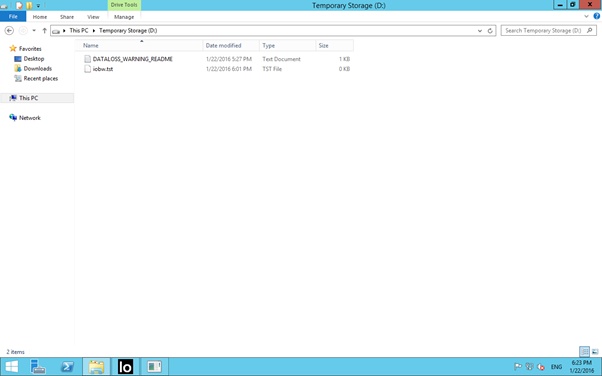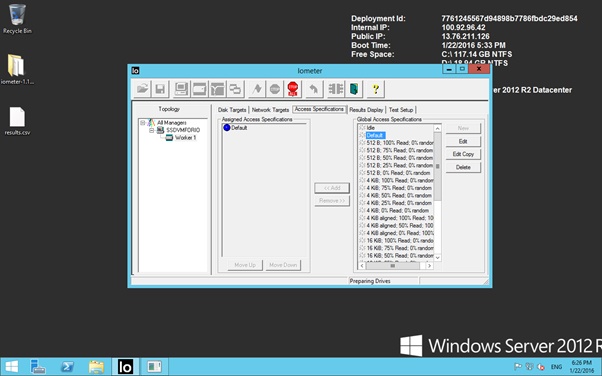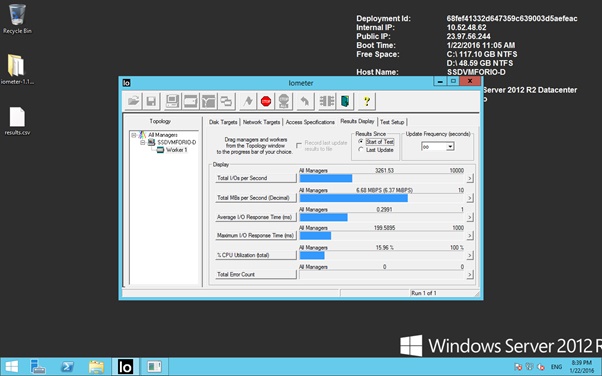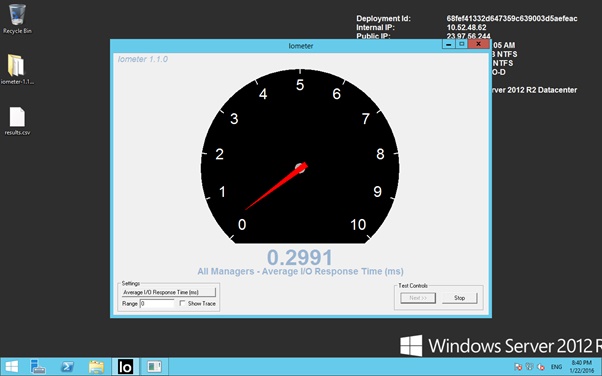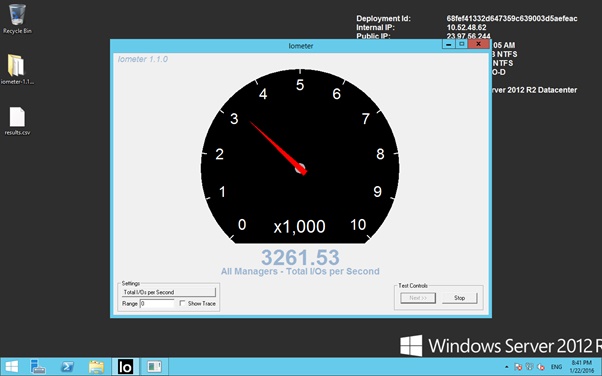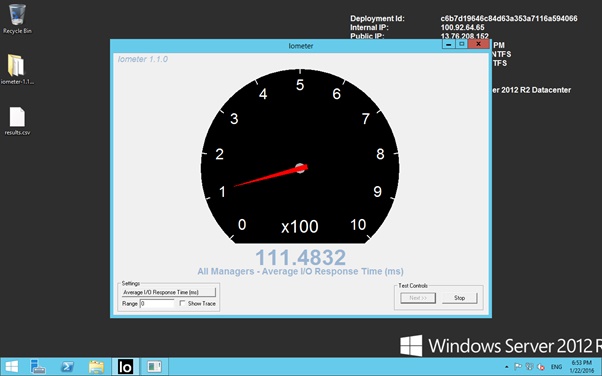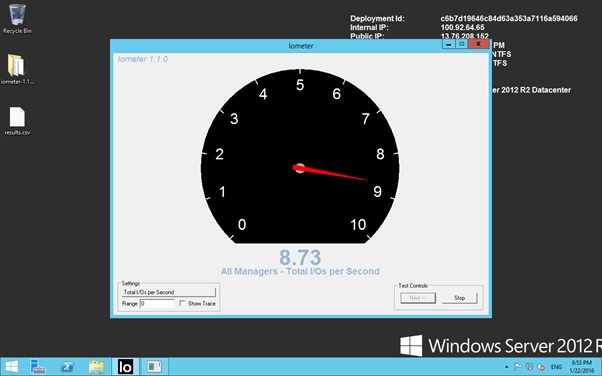Microsoft Azure: Performance Comparison of VMs for High performance computing
In this article, i am talking about how to do performance comparison of two virtual machines using IOMeter for high performance computing because only high core CPU and high memory is not sufficient for high performance computing along with that disk IO operations also taking part to achieve high performance, so in Microsoft Azure standard A series and D series machines are available so i have done experiments on two VMs using IOMeter to compare performance. So first of all create two VM A series machine and D Series machine in azure portal, configure IOMeter which is free tool available on internet.
After VM creation download RDP file and remotely connect with D series machine copy IOMeter setup files on desktop
Run IO Meter.EXE on D series RDP File ( D Series VM ) in Desktop iometer-1.1 Folder (Along with that Dynamo CMD console mode also opens minimize it)
Select Worker 1 under All Managers -> SSDVMFORIO-D
Select Disk Target D Drive
Select Access Specifications Tab Add Default from Right side to left side by Add Button
Select Green Flag Icon in Menu Bar
Save Result.csv file on Desktop
Now It will generate random data in D Drive (Shown Below iobw.tst file will fill all remaining disk space for IOMeter)
Than Click on Results Display Tab in IOMeter and Click Radio Button Last Update than Start of Test (Below snap)
See Average I/O response Time 0.29 Mili Seconds
Than Click ( >) Arrow Right Side of Average I/O Response Time (ms) (See Below snap)
Like that you can show all parameters; Than Click STOP Button Close IOMeter
Like wise you can select Read Write Random Operation in Access Specifications Tab rather than Default and Compare D Series and A Series Machines Performance Differences
Now IOMeter.EXE on A Series VM RDP File in Desktop iometer-1.1 Folder Run IT
See Below 111.48 Mili Seconds Average I/O Response Time (ms)
So from above experiment you can see drastic differences in performance between A series machine and D series machine in Azure VM because D series VM having SSD as a disk and A series machine having HDD as a disk. so we can see and compare performance using IOMeter.


